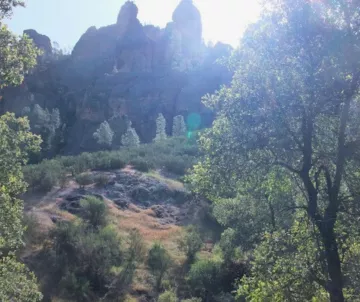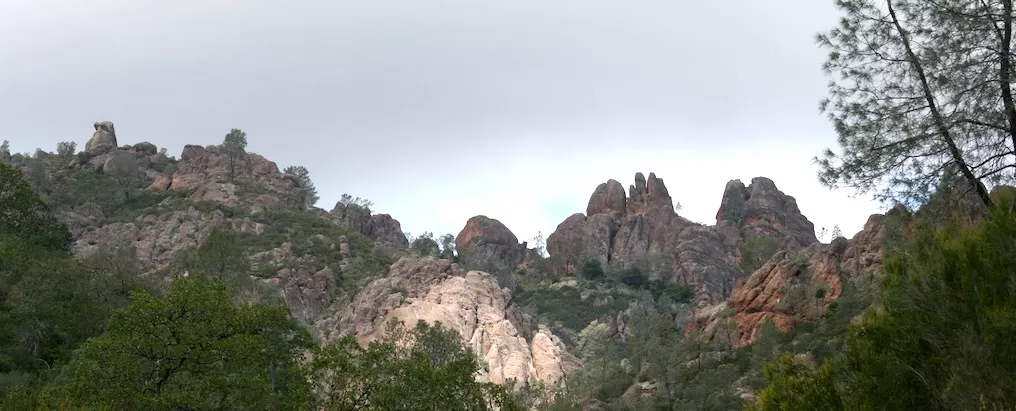
Pinnacles National Park is located east of the Salinas Valley. It consists of more than 30 miles of trails and was formed when the partial Pinnacles volcanic field, trapped between the San Andreas and Pinnacles Fault, started sinking downward, exposing its terrain to weather which created its unique topography. It contains a variety of landscapes, from volcanic rock spires and crags to caves to rolling hills.
History
In the 1890s, Schuyler Hain, a homesteader, realized how valuable and unique the terrain of the Pinnacles were and started leading tours throughout the area. He wrote numerous articles pushing for conservation efforts and was an influential person in President Theodore Roosevelt’s decision to dedicate Pinnacles as a National Monument in 1908. In 2013, President Barack Obama redesignated the monument as a National Park because of its abundance of cultural and natural resources in the park, including its many federally protected species
Pinnacles has faced numerous challenges over the past few decades, including keeping the National Park feral pig-free, managing and protecting the chaparral ecosystem by prescribing controlled fires, and controlling invasive species such as the yellow star thistle. Most prominently, in 1987, the California condor became extinct and captivebred condors were reintroduced in 1992. In 2003, Pinnacles became one of three California Condor release sites in the United States. However, these birds are still critically endangered.
Wildlife and Species

Pinnacles boasts a variety of bird species, including prairie and peregrine falcons, golden eagles, and the California condor.
It also contains amphibians which live mostly in caves, including the Pacific tree frog and California red-legged frog, the latter of which is listed as a Threatened species under the Endangered Specie Act. At least 13 species of bats live in the numerous talus caves.
Value for Indigenous Peoples
Many California tribes depended on the abundant resource at Pinnacles National Park for their survival. They hunted rabbits, deer and elk, gathered acorns and wildflower seeds, and fished for their food supply. They also used natural resources for medicine and
Geology
Pinnacles is home to rare talus caves that are formed when steep, narrow canyons become filled with masses of toppled boulders from the cliffs above. Its two main cave areas, Bear Gulch Caves and the Balconies Caves, continue to weather throughout time. Other geologic attractions include the Pinnacles Volcanic Formation, the High Peaks, and the Temblor Formation, which consist of igneous rock or granite. Movement of the San Andreas Fault and subsequent eroding and weathering has also created the majority of the rock structures, such as the rock spires and crags.
Threats
Increasing visitation poses a burden on the park’s natural resources. Overcrowding can threaten vegetation and wildlife and create more pollution.
